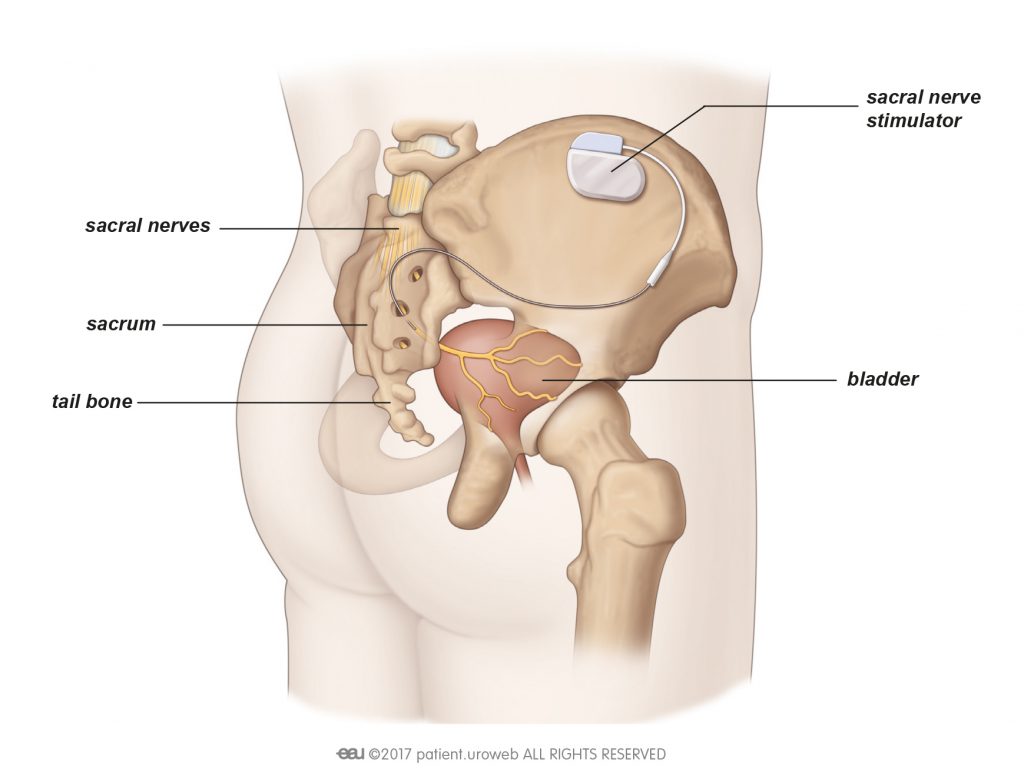Nerve stimulation, also known as neuromodulation, is an option for overactive bladder (OAB) if drug treatment has not worked. It is also an option if you have a urological problem caused by a disturbance of the nervous system (neurological disorder).
Nerve stimulation uses electrical pulses to stimulate the sacral nerves, which control the bladder. There are two types of nerve stimulation:
- Tibial nerve stimulation uses a needle at the level of the ankle
- Sacral nerve modulation uses a device that is implanted in your lower back
Tibial nerve stimulation
Your doctor will place a needle with electric current near your ankle. The needle passes through the skin and stimulates the tibial nerve. This nerve runs from the inner part of the ankle, along the leg, up to the sacral nerves in the lower back (Fig. 1).
A treatment course for tibial nerve stimulation generally includes 12 sessions. Treatment sessions are done once a week at a clinic and usually last 30 minutes. The effect will wear off over time, and you will likely need more treatment courses.
Sacral nerve modulation
The sacral nerve modulation procedure is done in two stages:
The doctor places an electrode through the skin and tests whether or not your OAB symptoms respond to nerve modulation. If the therapy fails to help, the electrode can easily be removed. If there is a response, you will receive surgery to implant a small device like a pacemaker (programmable pulse generator) above your pelvic bone.
For treatment, the electrode connects the implant to the area to be modulated (Fig. 2). After surgery, you will have a controller outside the body to adjust electrical modulation on the nerves that reach the bladder. You can change modulation to the nerve to affect bladder activity. Sacral nerve modulation can greatly improve your symptoms.
After surgery there is a risk of infection, and you may experience pain in the area of implantation. Over time, the implant or the electrode may move, causing discomfort. The implanted battery can also run out. If this happens, you will need another surgery to replace the battery. Be sure to discuss any of your concerns about these risks with your doctor.



